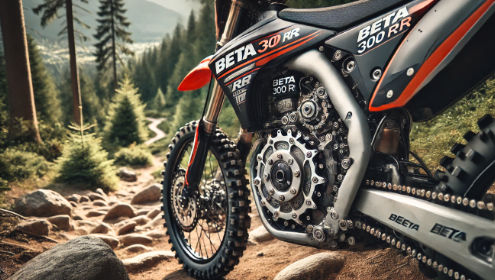
Introduction
The Beta 300 series has gained immense popularity among off-road enthusiasts for its power, agility, and reliability. One of the critical components influencing the performance of these bikes is the flywheel weight. While often overlooked, the flywheel weight plays a vital role in managing engine behavior, throttle response, and overall riding experience. This guide delves into everything you need to know about the Beta 300 flywheel weight, including its specifications, impact on performance, and options for customization.
What Is a Flywheel and Why Is It Important?
The flywheel is a rotating mechanical device that stores rotational energy. In motorcycles, it helps regulate the engine’s speed by smoothing out power delivery. This is especially crucial in two-stroke engines like those found in Beta 300 models, where power output can be abrupt and harder to control.
The weight of the flywheel directly affects the bike’s performance. A heavier flywheel provides smoother power delivery and improved traction, making it ideal for technical trails and low-speed maneuvers. Conversely, a lighter flywheel enhances throttle response and quick acceleration, making it better suited for aggressive riding styles.
Stock Flywheel Specifications for Beta 300 Models
The Beta 300 lineup, which includes the Beta 300 RR, XTrainer, and Race Edition, comes equipped with flywheels designed for balanced performance. While Beta does not officially disclose the exact weight of the stock flywheel, it is engineered to suit general off-road conditions. Here’s a comparative analysis of the models:
| Model | Engine Type | Flywheel Characteristics |
| Beta 300 RR | 2-Stroke | Moderate weight for versatility |
| Beta XTrainer | 2-Stroke | Heavier for smoother low-end power |
| Race Edition | 2-Stroke | Lighter for quick throttle response |
These specifications provide a foundation for riders to decide whether modifications might enhance their experience.
Impact of Flywheel Weight on Performance
The influence of flywheel weight on performance cannot be overstated. Here are some key impacts:
- Low-End Torque: A heavier flywheel helps maintain momentum, preventing stalls during technical climbs and tight turns.
- Throttle Response: Lighter flywheels deliver instant power, which is advantageous for motocross and high-speed riding.
- Traction Control: Heavier flywheels improve traction by moderating power delivery, reducing wheel spin in slippery conditions.
- Engine Braking: The weight affects how much the engine slows the bike when the throttle is closed, with heavier flywheels providing more braking.
For example, a trail rider navigating rocky terrain might prefer a heavier flywheel, while a racer focusing on quick sprints and jumps might opt for a lighter one.
Aftermarket Flywheel Weight Options
While the stock flywheel suits most riders, aftermarket options are available for those seeking tailored performance. Companies like Steahly Off Road offer bolt-on flywheel weights compatible with Beta 300 models. These weights typically range from 8 to 12 ounces and can be easily installed to enhance low-end performance.
Another innovative option is the Cippito Flexible Flywheel Weight system, which allows riders to adjust the weight dynamically based on terrain and riding style. This flexibility makes it a popular choice among competitive riders.
DIY Flywheel Weight Modification
For riders who enjoy hands-on projects, modifying the flywheel weight is a feasible task. Here’s a simplified step-by-step guide:
- Gather Tools: You’ll need a flywheel puller, torque wrench, and the aftermarket weight.
- Remove the Flywheel: Use the puller to detach the flywheel from the engine.
- Install the Weight: Secure the weight onto the flywheel, ensuring it is evenly distributed.
- Reinstall the Flywheel: Torque it to the manufacturer’s specifications.
Always consult your Beta 300’s manual for precise instructions and torque values to avoid damage.
Professional Flywheel Modification Services
If DIY isn’t your preference, professional services are widely available. Many Beta dealerships and specialized mechanics offer flywheel weight adjustment or replacement. While more expensive than DIY, professional modification ensures optimal results and minimizes risks.
Costs typically range from $150 to $300, depending on the service and parts involved. This investment can significantly enhance your riding experience.
Maintenance and Troubleshooting
Proper maintenance is essential to keep your flywheel in top condition. Here are some tips:
- Regular Inspections: Check for signs of wear or imbalance.
- Cleaning: Keep the flywheel area free of dirt and debris.
- Torque Checks: Periodically verify that the flywheel bolts are securely fastened.
If you experience unusual vibrations or reduced performance after modifying the flywheel, consult a mechanic immediately.
Expert Insights and Rider Experiences
Many riders have shared their experiences with flywheel weight modifications. A common sentiment is the noticeable improvement in traction and control with heavier weights, particularly in technical terrain. Conversely, racers often report increased agility and quicker lap times with lighter flywheels.
Experts suggest experimenting with different weights to find the ideal balance for your specific riding style and conditions.
Conclusion
The flywheel weight is a crucial aspect of the Beta 300’s performance, offering significant benefits when tailored to your needs. Whether you’re a trail enthusiast seeking better traction or a racer aiming for lightning-fast throttle response, understanding and optimizing your flywheel weight can transform your riding experience.
Investing in the right aftermarket options, maintaining your flywheel, and seeking expert advice when needed will ensure you get the most out of your Beta 300.
FAQs
- What is the stock flywheel weight for the Beta 300 RR? While the exact weight isn’t officially disclosed, the Beta 300 RR’s flywheel is designed for balanced performance across varied terrains.
- Can I install a flywheel weight myself? Yes, with the right tools and a basic understanding of mechanics, you can install an aftermarket flywheel weight.
- How does flywheel weight affect engine braking? A heavier flywheel increases engine braking, providing more control during downhill sections.
- Are aftermarket flywheel weights reversible? Most bolt-on weights are easily removable, allowing you to revert to the stock configuration if needed.
- What are the costs of professional flywheel modifications? Costs range from $150 to $300, depending on the service and parts used.
Related Articles
Chin Filler Before and After: A Complete Guide
HentaiNexus: The Rise, Impact, and Legacy of a Pioneering Platform
Innovative Uses for Shipping Container Buildings
Understanding “Small Straws in a Soft Wind”: A Gentle Guide to Daily Spiritual Inspiration





